Most consumers have a laptop or desktop computer, but they have no idea what type of storage device they are using. For example, an SSD makes a huge difference in performance compared to the hard drive. In this article, we will show how to check the hard drive you have on Windows 10.
How to check the hard drive you have
What hard drive do I have? Do I have an SSD, hard drive or hybrid drive? How to check the specifications and RPM of your Windows computer hard drive? These are some of the questions that we will try to answer using integrated solutions and free software applications.
- Using the device manager
- Using the MSInfo32 tool
- Using PowerShell
- Using a third-party tool
Not all tools can display the RPM and media type of the hard drive. Some of them can only find the model number, while others can only tell you the RPM. Please be aware that an SSD has no RPM, that is, there are no turntables like the hard drive.
1) Using the Device Manager
Although Device Manager does not directly display the RPM or disk type, it may contain other details, including the model number of the storage device.
- Use WIN + X to open the power menu and select Device Manager
- Browse the tree and find the disk drives. Expand it
- Right click on the disk and choose properties. You can also double-click for the same.
- Switch to the Details section, then select Hardware ID from the Property drop-down list.
- The model number will be available with other details. So in this case, it is DISKST3500418AS. Therefore, the model number would be ST3500418AS
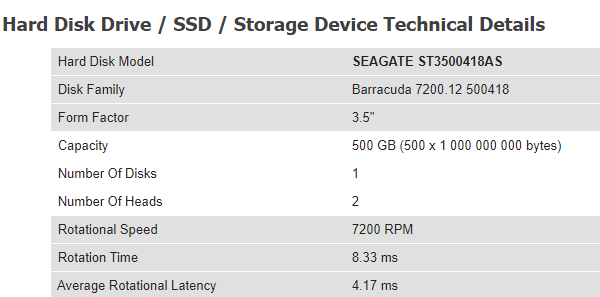
Now search for the model number in Google or Amazon. Sites like hdsentinel.com can give you the complete information. If the reader is a SSD, it will be mentioned explicitly.
2) Use of the MSInfo32 tool
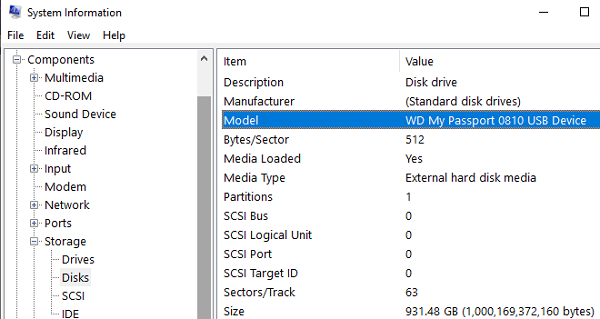
You can also use the msinfo32 tool in Windows to find the manufacturer and model number. Once you have done this search on Google or on a website that offers details based on the model number of the hardware. Sometimes the model name in the list will have SSD included in the MSInfo32 tool. Otherwise, you will need to search via the device model number.
3) Using PowerShell
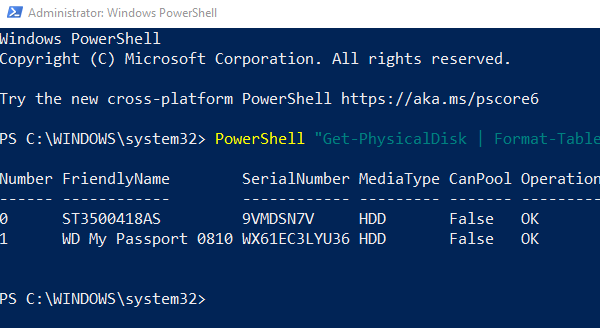
- Use WIN + X to open the power menu and select PowerShell Admin to launch it
- Type and execute the command Get-PhysicalDisk
- The output will have a column with the name Media Type.
- Check if it is a hard drive or SSD
To find the RPM using PowerShell, you will need to run the following command as mentioned in this thread.
$ComputerName = ".", "." ForEach ($C in $ComputerName) { $Hash = @{ "ComputerName" = $C "namespace" = "rootMicrosoftWindowsStorage" "Class" = "MSFT_PhysicalDisk" "ErrorAction" = "Stop" } Try { Get-WMIObject @Hash | Select-Object -Property @{N="ComputerName"; E={$C}}, @{N="Speed(RPM)";E={$_.SpindleSpeed}}, DeviceID, @{N="Supported";E={$True}} } Catch { $Obj = New-Object -TypeName PSObject -Property @{ "ComputerName" = $ComputerName "Speed" = $Null "DeviceID" = $Null "Supported" = $False } Write-Output $Obj } }You can also use the disk defragmenter and the Windows command prompt to find out whether it is an SSD or a hard drive.
4) Use of third-party tools
Crystal disc information is a handy tool if you want to check the health of your hard drive. Although the software does not talk about SSD or hard drive, it can display the RPM of the storage device.
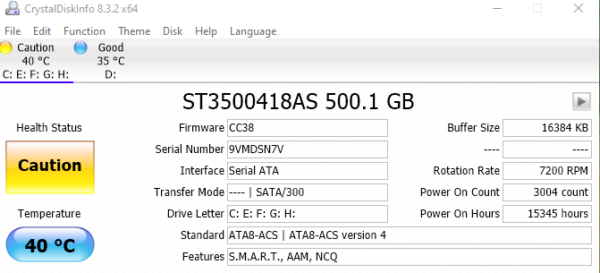
Free PC Audit is another free tool that is one of the few tools that can find the media type for the storage device. Once you've located the disk section, expand it and select the media type to see if the storage devices are SSD or HDD. Download it from Official page.
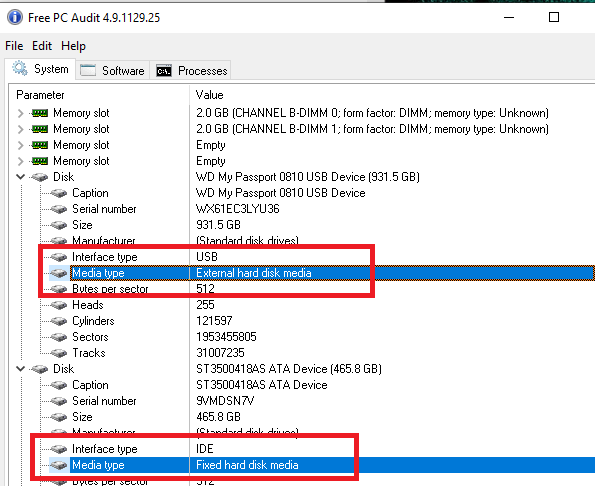
HDD scanning is a free tool for diagnosing the hard drive. The program can test storage devices for errors, bad sectors, show S.M.A.R.T. attributes and RPM. Launch the tool, then click the Tools> Drive ID button. It will generate a report which will include RPM as one of the main parameters. Download the software from HDDScan
If you want to upgrade to SSD, but are not sure whether the full SSD configuration works better or HDD, then rread our ultimate guide to hybrid drives.
I hope the set of recommended tools has been helpful in checking the hard drive you have on Windows 10.
